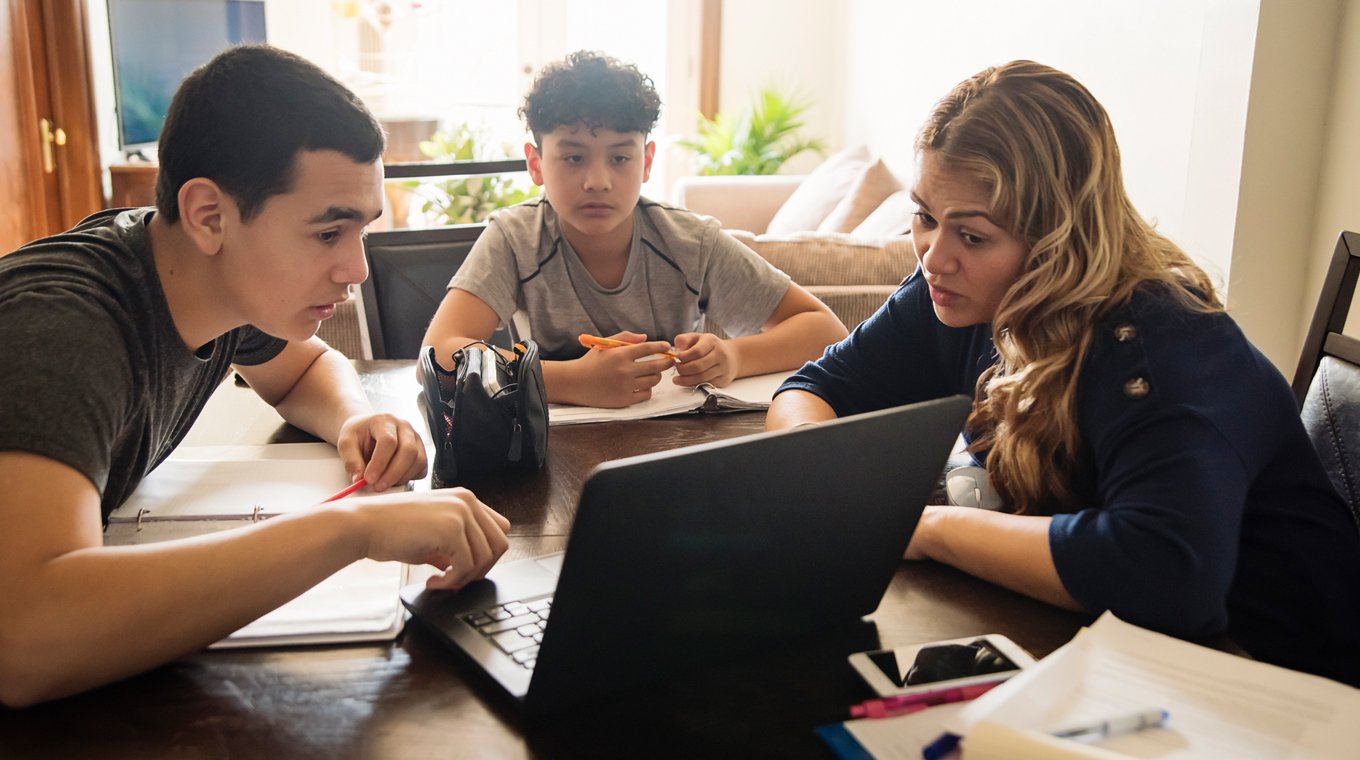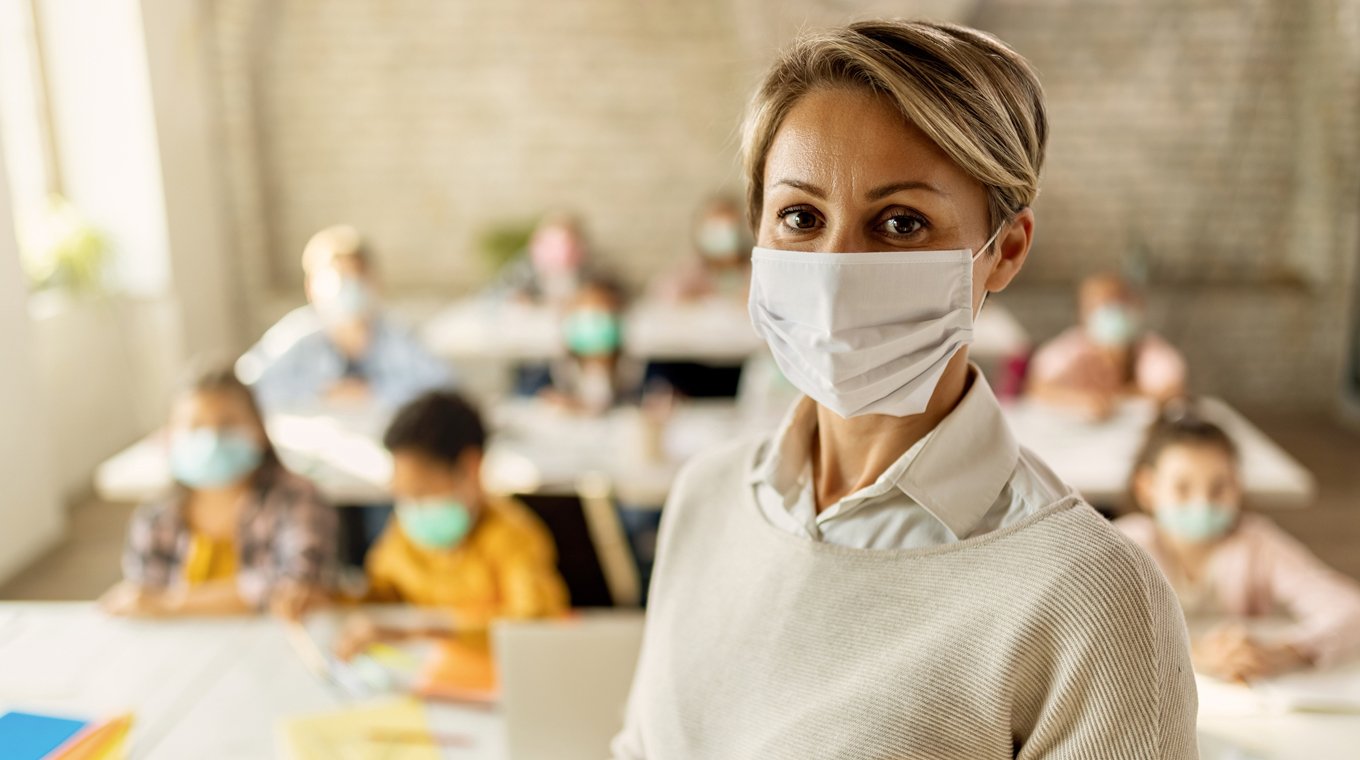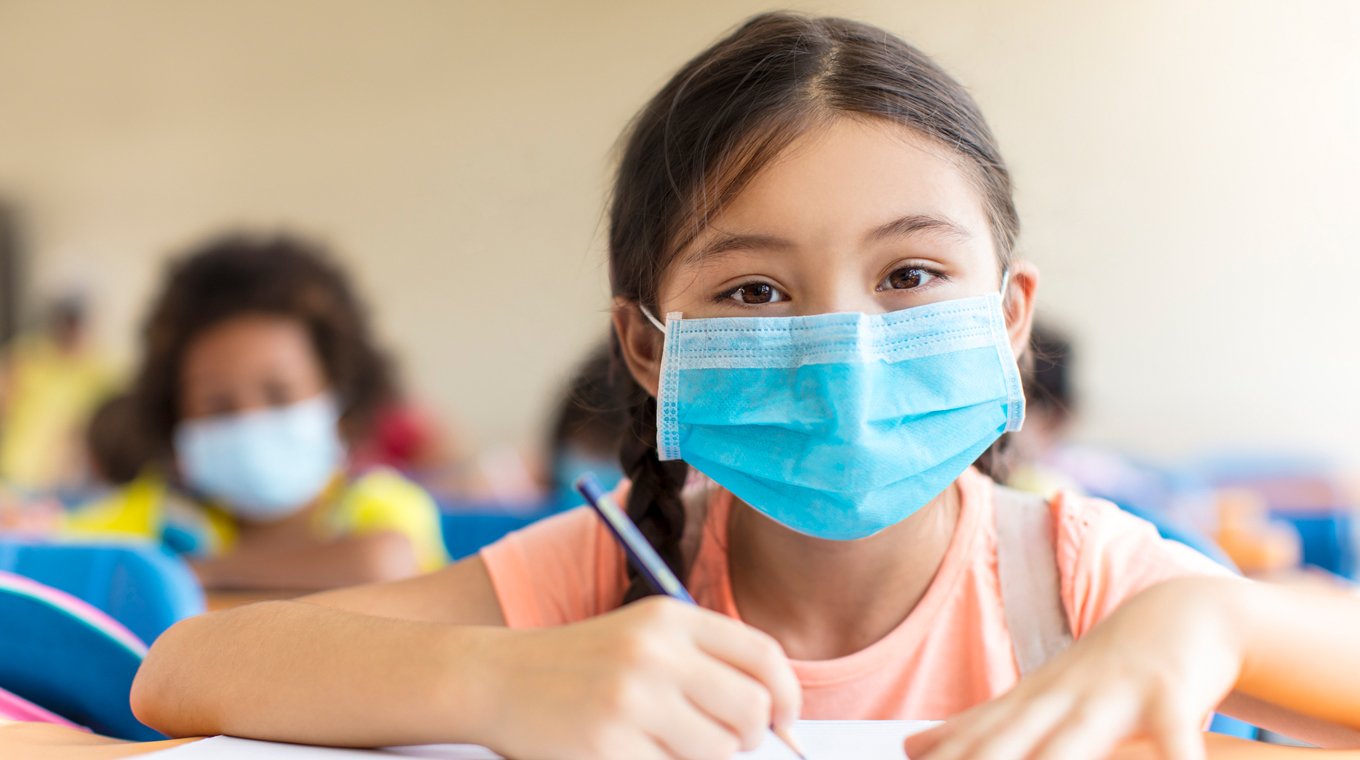
In this article
As we have seen, a lot can happen in a year. When it comes to COVID-19 and schools, we’ve embarked on a national distance learning campaign with growing pressure to have schools reopen sooner than later. Embarking on this pandemic anniversary helps keep things in perspective and set realistic goals moving forward. Here's what you can expect regarding your child's school after COVID.
Where we were one year ago: School guidelines by state

As a teacher and mom, Misty Lewis shared her experience of what happened when the pandemic started: “On the teacher side, I still had to prepare learning packets for my students to finish out the rest of the year at home. Many of my students do not have internet access, nor do they have reliable devices (especially if they have to share with other siblings)," she told Mom.com. "I did have to finish teaching my AP biology class online because they were still preparing to take the AP exam.” Additionally, Lewis had to deal with things as a mom. “I was faced with the challenge of keeping them busy and learning at home. Luckily, we had really great weather and were able to play in our yard a lot.”
When the pandemic started, no one could have imagined how long kids would be out of school. School closures were mandated by state guidelines, and at first, everyone tried to minimize the problem with short closures for building cleaning and disinfecting. I recall my son’s school first just tacking on time to spring Break. Then they added a few more weeks. Then proms, events, and sports were canceled for the year. In our case, graduation was modified to have a drive-by ceremony.
Through it all, teachers, parents, and students learned what remote learning was all about. Our kids became accustomed to Zoom classes and all assignments being handled remotely. At first, there were policies that no kid would be left behind due to the pandemic — remote grades weren’t counted and many kids, like my son, couldn’t figure out why they needed to attend class if there were no consequences.
Where we are now: COVID precautions in school

Right now, some kids are learning in person. Now that online learning has had a chance to evolve, grades do count, and students are expected to meet the demands of the classwork. Virtual learning has become more impressive, but it has taken a toll on students and teachers.
But this is not without its challenges. “Students may no longer have an internet connection, a device to use, or a space to learn in. Some students may not be available to meet at specific times. Others may have a lot going on in the background that they’re trying to block out or even hide from the rest of the class,” Amanda Morin of Understood.org wrote for the Child Mind Institute.
Many kids miss the social aspect of school and are admittedly anxious about continuing to learn remotely. It’s harder, especially for younger students, to keep track of assignments and coursework. Parents are frustrated trying to meet the demands of parental oversight in remote learning and this is causing increased anxiety in kids. Additionally, students with disabilities are not getting the services they are entitled to in order to succeed. Ultimately, everyone agrees that virtual learning has taken a toll on all parties.
Some schools and school districts have developed a hybrid of in-person and remote that's limited to certain students on certain days. This keeps the number of people in a building down and reduces the chances of COVID spread. This has its own set of challenges and frustrations, with parents unable to keep track of school schedules and teachers having to balance in-person help with virtual help.
Other schools have reopened completely and are working with the CDC guidelines as they evolve. While this is seen as good for the kids and many parents who are ready to see all schools reopen and return to some sense of normalcy, it isn’t without risk. Some teachers say that certain schools are not ready to teach while preventing COVID-19 from spreading through the classroom. Some say the guidance set forth by the current administration could make reopening many schools more difficult.
Going forward: School reopening

As schools and parents prepare for school reopening, the guidelines attempt to balance safety and successful learning. According to the CDC, essential elements to going back to school include:
- Consistent implementation of mitigation strategies to reduce COVID spread
- Reduced community risk indicators
- Phased learning modes based on community transmission levels
What this means is that when your child returns to school, they will need to wear a mask in school, have appropriate social distancing space, wash hands often, and the community as a whole has to have what is deemed manageable cases of transmission. Schools will have to implement more stringent, regular cleaning and disinfecting of property and have a system in place for contact tracing in the event that someone contracts the virus.
Schools have a lot of work to do as well. This includes improving air filtration and redesigning classroom space. The reality is that most schools don’t feel that they will be ready until the new school year begins in the fall.
No matter which way you look at it, there is still a lot of uncertainty for many students when it comes to in-person learning. We hope that as the vaccine continues to be distributed, and more is understood about transmission, we can get the kids back to a normal learning environment sooner than later.







